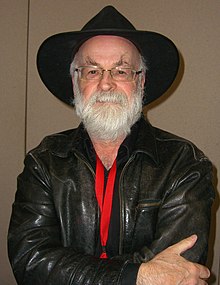- 0
Behind the Scenes: Unveiling the Secrets of a Film Crew’s Production Process
When we watch a movie, we are often captivated by the actors' performances, the storyline, and the visuals on the screen. However, behind every successful film is a dedicated team of professionals working tirelessly behind the scenes to bring the movie to life. From pre-production planning to post-production editing, the film crew production process is a complex and intricate journey that is essential to the success of any film. In this article, we will delve into the secrets of a film crew's production process to uncover the magic that happens behind the camera.
Pre-Production: Planning and Preparation
Before the cameras start rolling, a film crew goes through an extensive pre-production phase where the groundwork is laid for the entire project. This stage involves careful planning and preparation to ensure that everything is in place for a smooth production process. Some key tasks involved in pre-production include:
1. Script Development
- The script is the backbone of any film, serving as the blueprint for the entire project.
- During pre-production, the script is refined, revised, and finalized to ensure that it aligns with the director's vision.
2. Casting
- The casting process involves selecting the actors who will bring the characters to life.
- Casting directors hold auditions and screen tests to find the perfect fit for each role.
3. Location Scouting
- Finding the right locations to shoot is crucial for creating the visual world of the film.
- Location scouts search for suitable sites that match the director's vision and logistical requirements.
Production: Lights, Camera, Action!
Once pre-production is complete, the film crew moves into the production phase, where the actual filming takes place. This is when the magic truly happens as the director, actors, and crew come together to bring the script to life. Some key aspects of the production phase include:
1. Setting Up
- The production crew sets up the equipment, lighting, and props for each scene.
- Camera and sound crews prepare their gear to capture the action on set.
2. Directing the Actors
- The director works closely with the actors to bring out the best performances.
- They provide guidance on character motivations, emotions, and overall storytelling.
3. Shooting the Scenes
- Once everything is in place, the cameras start rolling, and the scenes are shot according to the script.
- Multiple takes may be required to get the perfect shot, with each shot carefully planned and executed.
Post-Production: The Final Touches
After the filming is complete, the film crew enters the post-production phase, where the footage is edited, and the final film is put together. This stage is where the film truly comes together, with sound editing, visual effects, and color grading adding the finishing touches. Some key elements of post-production include:
1. Editing
- The editor pieces together the footage to create a cohesive narrative.
- Cuts, transitions, and special effects are added to enhance the storytelling.
2. Sound Design
- Sound designers work on adding audio elements such as dialogue, music, and sound effects.
- Sound mixing and editing are crucial for creating an immersive auditory experience for the audience.
3. Visual Effects
- Visual effects artists create computer-generated imagery (CGI) to enhance the visuals of the film.
- From explosions to fantastical creatures, visual effects add an extra layer of magic to the storytelling.
Conclusion
Behind every great film is a team of dedicated professionals working tirelessly behind the scenes to bring the director's vision to life. From pre-production planning to post-production editing, the film crew's production process is a complex and intricate journey that requires skill, creativity, and teamwork. By understanding the secrets of a film crew's production process, we can gain a deeper appreciation for the art of filmmaking and the effort that goes into creating movie magic.

